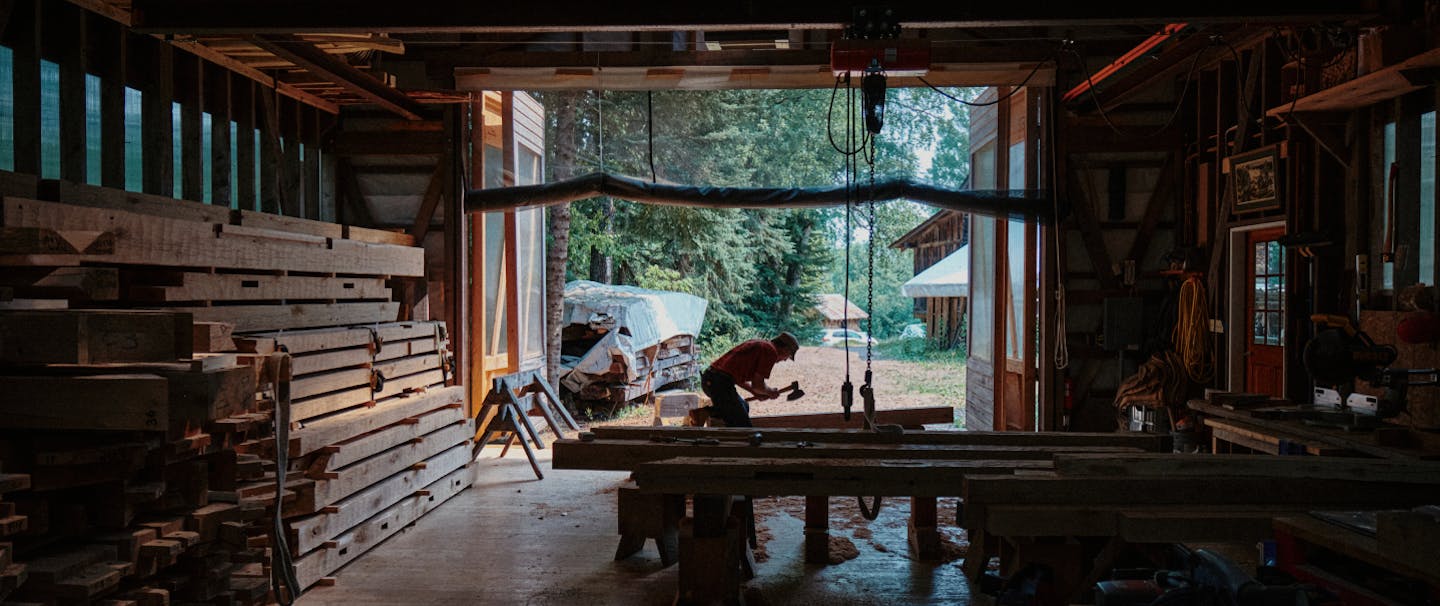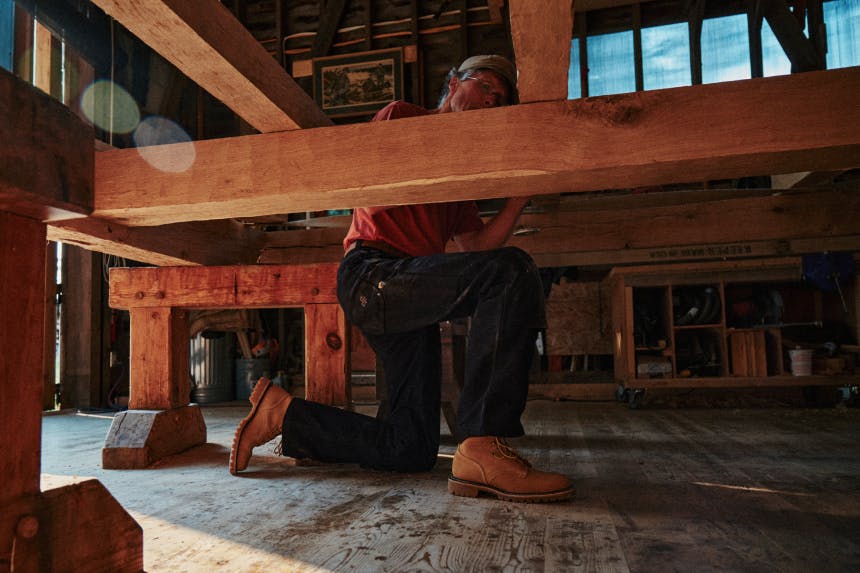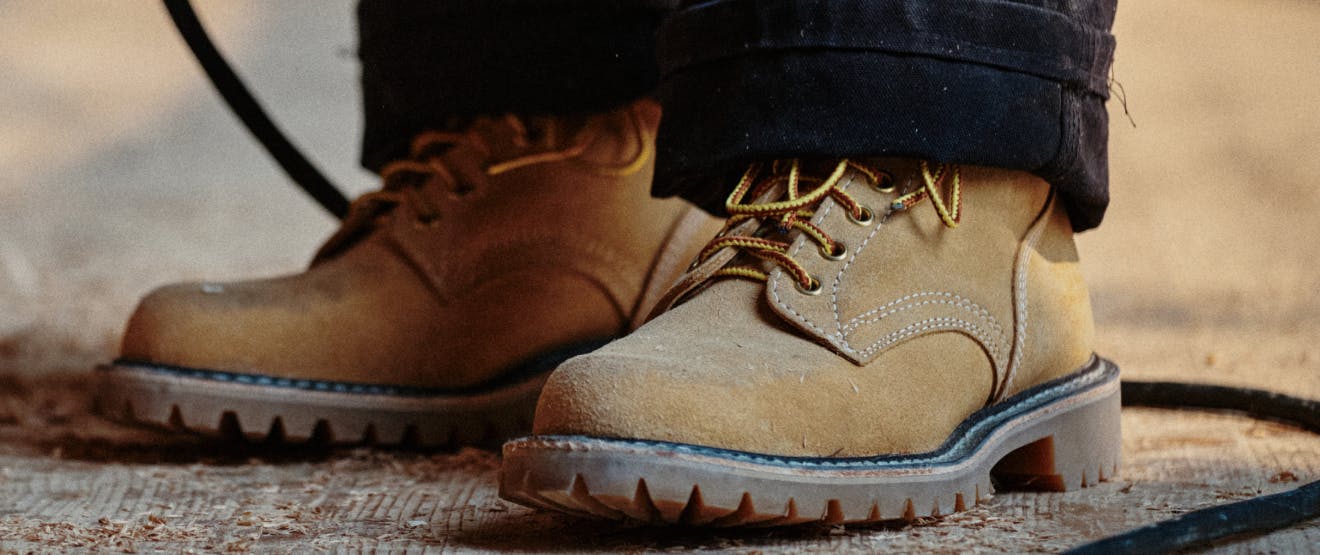“You see the bones of the building,” says timber framer Peter Henrikson. “You see how the building works, structurally and aesthetically, because nothing is covered with flesh and muscle.”
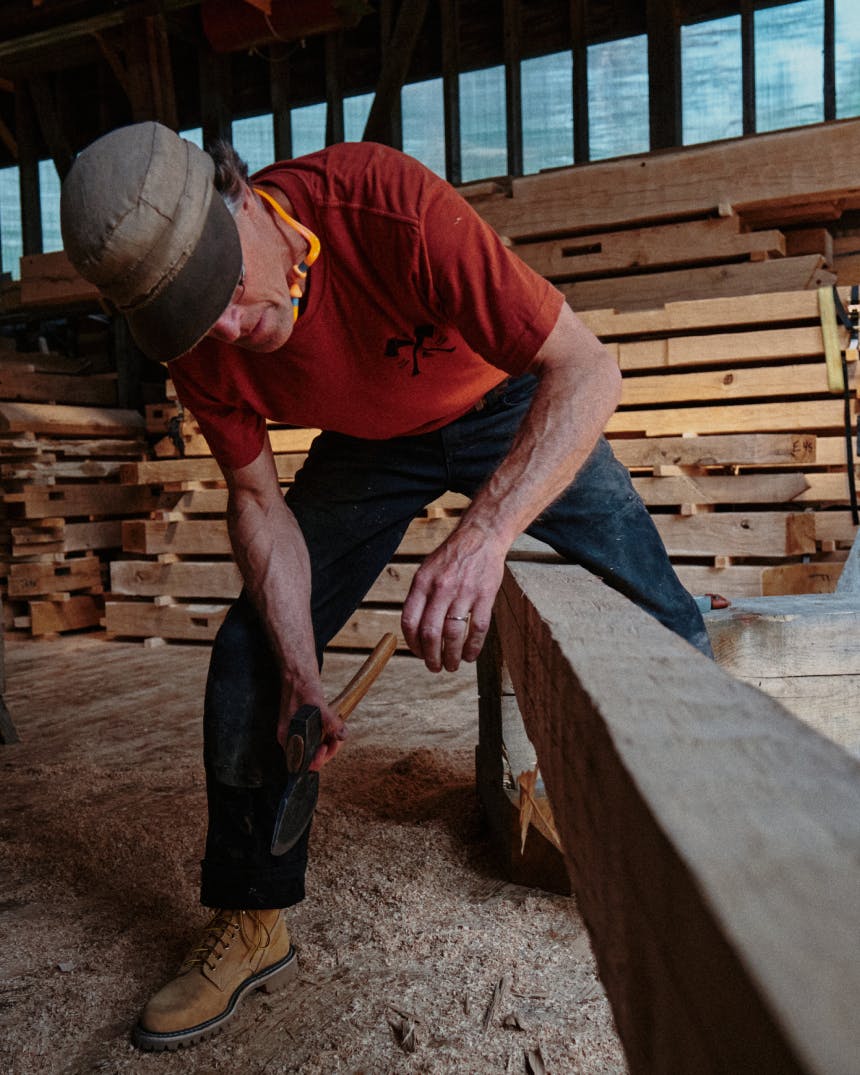
Whether it is in a timber-framed home, or a backcountry stream bridge, or a 16th-century boatshed built on the shores of a Norwegian lake, it is the invisible that makes the visible hold together. Stout timbers connect one to the other, each log hand-selected, each joint hand-fitted, each nexus of beam and truss and tie and rafter its own unique, articulated piece of hand-wrought woodworking. For many, timber framing is, in its essence, an expression of honesty.
In his Minnesota timber framing shop on the north shore of Lake Superior, Henrikson designs and crafts structures as seemingly simple as backcountry bridges and as complex as massive homes, cabins, and public buildings. He’s taught timber framing and other traditional woodworking skills at North House Folk School in Grand Marais, Minnesota, for more than 20 years. Influenced by the ancient stave churches of Norway—where Henrikson studied Grindbygg timber frame buildings, some of which date to the 16th century—and the robust barns of the Midwest, Henrikson has worked on the group building projects of a chime tower for St. Olaf College in Minnesota and a soaring wine-tasting room for a local winery. He custom designs plans for timber frame homes, but Henrikson is attracted less by the scale of a project’s footprint than its pull on his imagination. His current project is a 1,000-foot cottage with 10 different roof lines and a tower. To start, all the client sent him was a photograph of a clay model.
No matter the scale of a timber-framed structure, its soul is found in the subtle details. “Joinery” is the term used to describe the cutting and fitting of the timbers together. It is a process involving mathematics and geometry, physics, and aesthetics. Each cut of saw or adze must be precise. “You have to be right on a pencil mark,” he says. “And no dull pencils allowed.” Each piece is fitted, one to the other and then to another, one at a time, by hand. Henrikson’s journey as a craftsman has been similarly tailored, the pieces and parts fitted one to the other. Born in Seattle, Henrikson and his family moved to Colorado when he was eight years old, to a house that his family literally built around him.
“I lived in a partially constructed house for about five years,” he says. “As a kid, we’d don tool belts and go pound nails.”
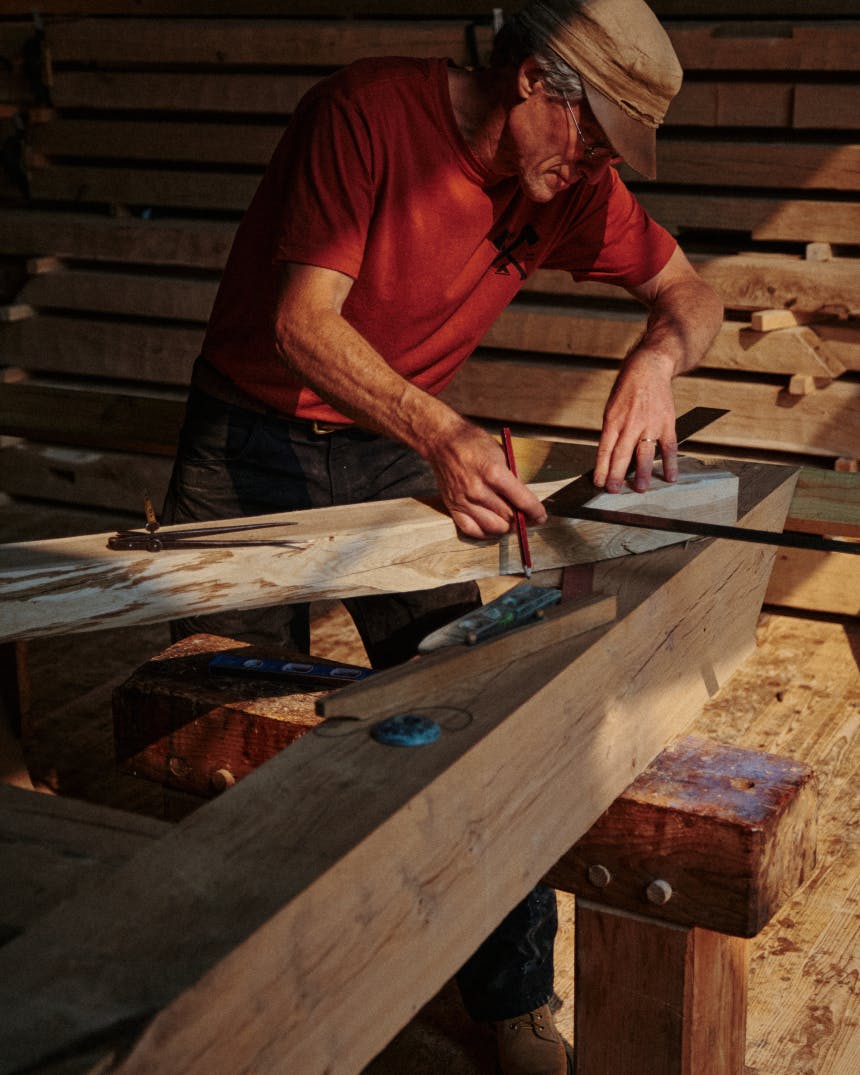
Henrikson’s journey to working with wood wasn’t so much an epiphany as a long, deeply felt, unfolding awareness. After graduating from UC Santa Barbara in 1985 with a degree in biology and environmental science, he rode a bicycle across the country to the New York Adirondacks, helped a friend build a cabin, then went to work for the Student Conservation Association in the summer after the 1989 big fires swept through Yellowstone National Park. There he helped design a backcountry bridge with traditional joinery and no metal hardware. He went on to work for the SCA seasonally for nine years, teaching timber skills and how to design bridges and structures in the backcountry.
If there is a theme, a current running through the river of Henrikson’s life, it seems to be a leaning toward the intimate and personal and tactile. He quotes revered furniture historian and woodworker David Pye, who wrote of the two kinds of workmanship: “There is the workmanship of certainty,” Henrikson explains, which is what occurs with power tools and CNC machines and other devices that have morphed the hand-wrought into the machine replicable, “and there is the workmanship of risk.” On that end of the spectrum, quality is not predetermined by a machine. It is inherent in and expressed through the workman’s craft.
One of Henrikson’s most recent projects bears witness to the timeless, yet globally-connected, modern expression of timber framing. He was recently recruited by Handshouse Studio to help construct a full-scale replica of one of the 800-year-old framing trusses lost in the tragic fire that burned the roof of the Notre Dame de Paris in 2019. Truss #6 stood above the choir, one of a host of wooden structures made from trees cut down prior to 1220. Originally hand-raised beside the Basilica of the Holy Shrine of the Immaculate Conception in Washington, D.C., and then raised again on the National Mall, the replica is now on display in the Great Hall of the National Building Museum.
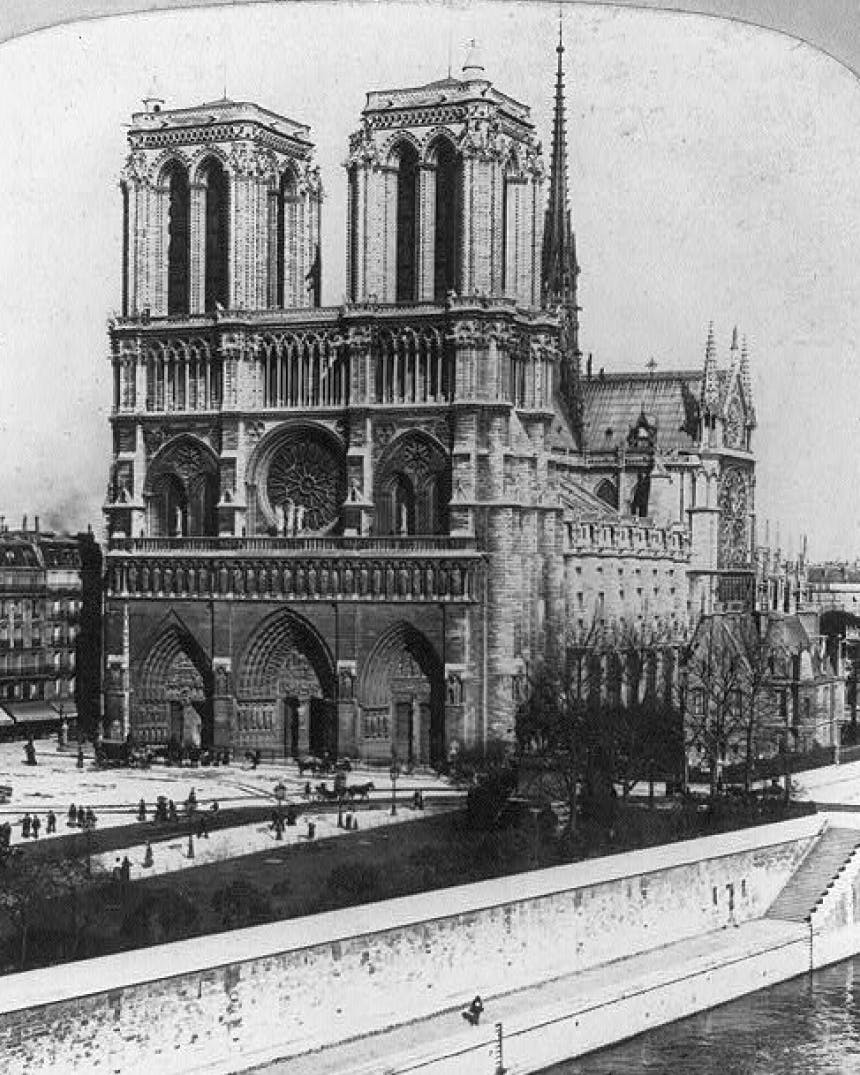
Notre Dame Cathedral, Paris, France
Like all Henrikson’s work, it is a project that relies on what is perhaps the planet’s oldest force: gravity. And perhaps humankind’s most underutilized tool: imagination.
